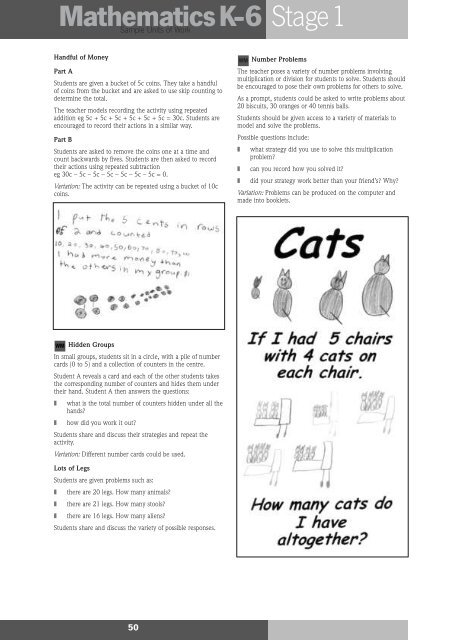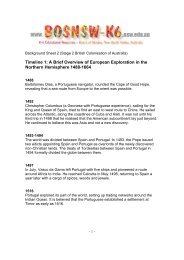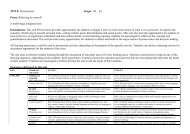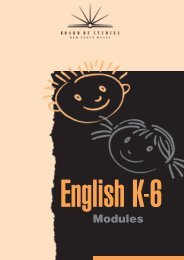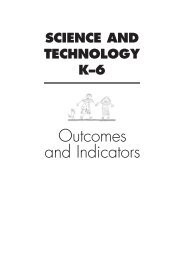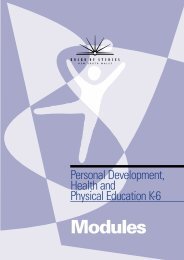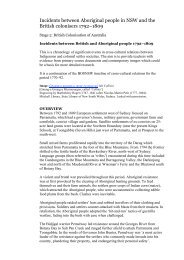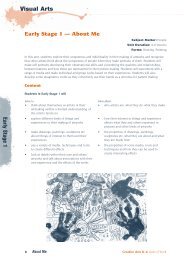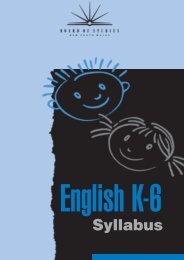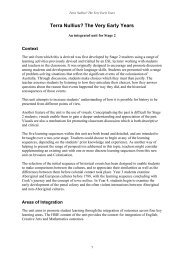Math K-6 WS - K-6 Educational Resources
Math K-6 WS - K-6 Educational Resources
Math K-6 WS - K-6 Educational Resources
Create successful ePaper yourself
Turn your PDF publications into a flip-book with our unique Google optimized e-Paper software.
<strong>Math</strong>ematicsK-6 Stage1<br />
Handful of Money<br />
Part A<br />
Students are given a bucket of 5c coins. They take a handful<br />
of coins from the bucket and are asked to use skip counting to<br />
determine the total.<br />
The teacher models recording the activity using repeated<br />
addition eg 5c + 5c + 5c + 5c + 5c + 5c = 30c. Students are<br />
encouraged to record their actions in a similar way.<br />
Part B<br />
Students are asked to remove the coins one at a time and<br />
count backwards by fives. Students are then asked to record<br />
their actions using repeated subtraction<br />
eg 30c – 5c – 5c – 5c – 5c – 5c – 5c = 0.<br />
Variation: The activity can be repeated using a bucket of 10c<br />
coins.<br />
WM<br />
Hidden Groups<br />
In small groups, students sit in a circle, with a pile of number<br />
cards (0 to 5) and a collection of counters in the centre.<br />
Student A reveals a card and each of the other students takes<br />
the corresponding number of counters and hides them under<br />
their hand. Student A then answers the questions:<br />
❚ what is the total number of counters hidden under all the<br />
hands?<br />
❚ how did you work it out?<br />
Students share and discuss their strategies and repeat the<br />
activity.<br />
Variation: Different number cards could be used.<br />
Lots of Legs<br />
Students are given problems such as:<br />
Sample Units of Work<br />
❚ there are 20 legs. How many animals?<br />
❚ there are 21 legs. How many stools?<br />
❚ there are 16 legs. How many aliens?<br />
Students share and discuss the variety of possible responses.<br />
50<br />
WM<br />
Number Problems<br />
The teacher poses a variety of number problems involving<br />
multiplication or division for students to solve. Students should<br />
be encouraged to pose their own problems for others to solve.<br />
As a prompt, students could be asked to write problems about<br />
20 biscuits, 30 oranges or 40 tennis balls.<br />
Students should be given access to a variety of materials to<br />
model and solve the problems.<br />
Possible questions include:<br />
❚ what strategy did you use to solve this multiplication<br />
problem?<br />
❚ can you record how you solved it?<br />
❚ did your strategy work better than your friend’s? Why?<br />
Variation: Problems can be produced on the computer and<br />
made into booklets.


